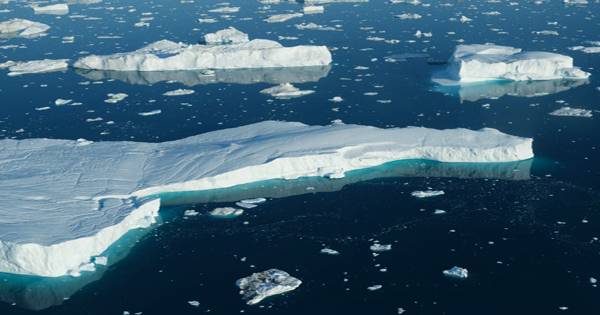The ice shelf at the 4,000-year-old Milne in Canada on the northwestern tip of Elsevier Island was the country’s last intact ice shelf until the end of July when Adrian White, an ice analyst at the Canadian Ice Service, noticed in satellite imagery that about 43% of it was broken off. He said it happened on July 30 or 31.
White said the two giant icebergs were made with lots of small ones and they were already starting to move away, White said. The largest is about the size of Manhattan – 21 square miles (55 square kilometers) and 7 miles long (11.5 kilometers). These are 230 to 260 feet (70 to 80 meters) thick.
The white ice shelf of rocks and wells submerged in blue molten water was the 72-square miles (187 square kilometers) larger than the District of Columbia, but now covers 41 square miles (106 square kilometers).
Temperatures in the region from May to early August were 90 degrees (5 degrees Celsius) warmer than the average from 1980 to 2010, said Luke Copeland, a professor of glaciology at the University of Ottawa. It is at the top of an Arctic that was already warming much faster than other Earths; the region is warming even faster.
There were continuous ice sheets across the north coast of Alexamar Island in the Nunavut region of Canada, but it has been crumbling for the past decade due to man-made global warming, White said. By 2005, it was down to six ice sheets, but
Milon was really the last complete ice shelf, she said.
“Undoubtedly its climate change,” Copeland said, noting that the ice shelf is melting from both the warm air at the top and the hot water at the bottom. He added, Miley was very special. It’s an amazingly beautiful place.
Ice sheets are thousands to thousands of years old, thicker than long-term sea ice but not larger and older than glaciers, Copeland said. There aren’t very many ice shelves around the Arctic anymore, Copland said. It seems we’ve lost pretty much all of them from northern Greenland and the Russian Arctic. There may be a few in a few protected fjords.















